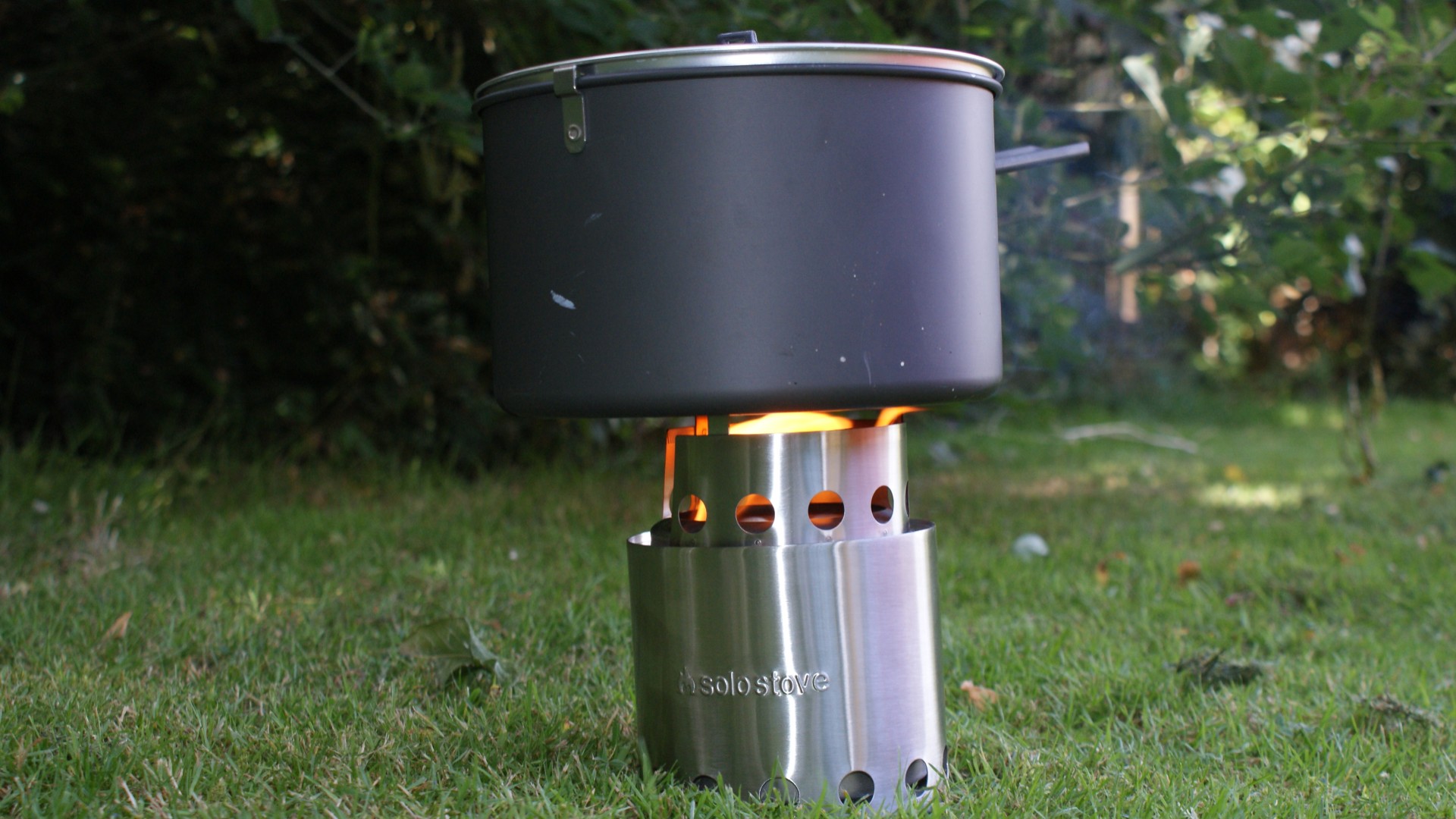Advnture Verdict
The Solo Stove is not as quick, efficient or convenient as a gas bottle stove, yet I ended up loving it, adoring its outback woodsman approach and appreciating its swiftly charred patina. I can’t pretend I’d take it backpacking along one of the UK’s long-distance paths (there’s no guarantee of dry fuel), but for car camping or safari treks it would add definite character to the experience.
Pros
- +
Fun to use
- +
No worries about gas running out
- +
Robust
Cons
- -
Heavier and bulkier than most stoves
- -
Slower boil time
- -
You need to find your fuel
You can trust Advnture
First thoughts
The Solo Stove Lite, like other Solo Stoves, brings out the hunter-gatherer in campers, due to their fuel source: twigs. Children will love foraging around for dry tinder to burn, and there’s something edifying about being self-sufficient, rather than relying on gas.
However, there’s always the risk that heavy rain will have soaked available twigs or that there’s no combustible material around (an alcohol burner is available as an accessory for £22.50/$20).
Once you fire it up, the Solo Stove has a smart double combustion process, designed to improve the stove’s heat transfer to the cooking pots/kettles that perch on top. This stove is slightly heavier than others, but you save weight by not having to carry fuel.
- Take a look at the best camping stoves in our buying guide
- Prepare a tasty meal with the best camping utensils
- Update your camping experience with the best camping tech
In the field
As match 12 flickers into flame then fizzles out, I’m ready to give up. The explorer and survivalist Bear Grylls may be able to conjure fire from two sticks and a pinch of dried grass, but even armed with matches I’m struggling to light the Solo Stove.
So I cheat, add the corner of a domestic firelighter into the grate and whoosh… fire. About six minutes later I’m pouring half a litre of boiling water into a pair of mugs. Not bad!
There’s something intoxicating about camp cooking with a real wood fire, a deep-rooted satisfaction of living off the land. First, the Solo Stove needs dry (very dry) twigs and sticks about the size of a thumb, plus a bit of tinder (it’s fun walking around a campsite asking other campers if their pitch is on Tinder!), and then a flame.
After that the smart engineering takes over, channeling air through the bottom vents into the main combustion chamber, while warmed air in the double-side walls circles back through the top vents for an extra oxygen boost, raising the stove’s efficiency. The result is a lively fire that boiled water much more quickly than I had anticipated.
All the latest inspiration, tips and guides to help you plan your next Advnture!
To boil a greater volume of water required more twigs, fed through a gap in the stove’s cage, and yes, first time I did singe my fingers. And no, there’s no way to control the heat if you wanted to cook, rather than simply boil water. Plus, the flame can be a bit lively, leaping out of the grate, so I’m glad I’d set it up away from the tent.
After spending a decade as editor of Country Walking, the UK’s biggest-selling walking magazine, Jonathan moved to edit Outdoor Fitness magazine, adding adrenaline to his adventures and expeditions. He has hiked stages or completed all of the UK's national trails, but was once overtaken by three Smurfs, a cross-dressing Little Bo Peep, and a pair of Teletubbies on an ascent of Snowdon. (Turns out they were soldiers on a fundraising mission.)


